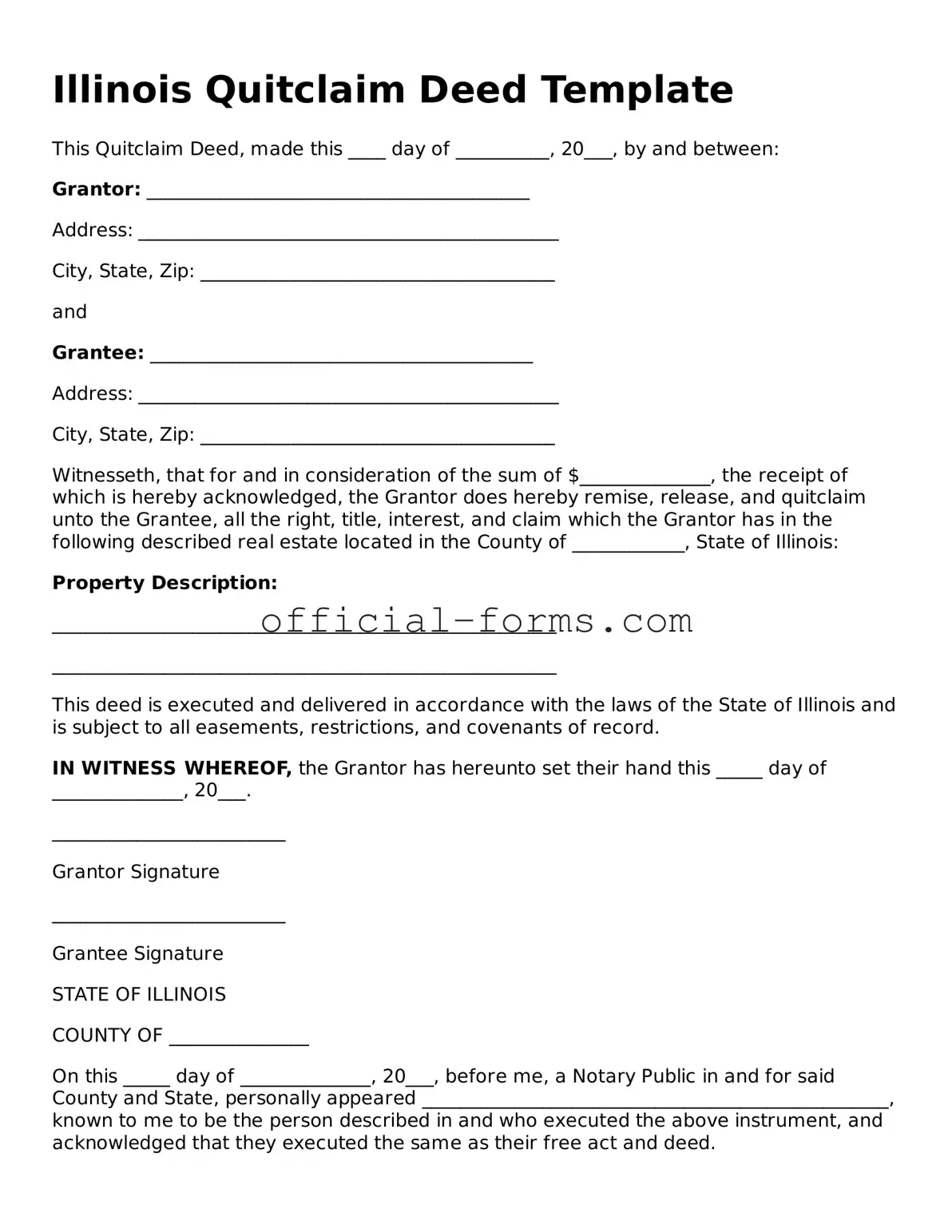Filling out the Illinois Quitclaim Deed form can be a straightforward process, but many individuals make common mistakes that can lead to complications. One frequent error is failing to include the correct legal description of the property. A vague or incomplete description can create confusion regarding the property being transferred, which may result in legal disputes down the line.
Another mistake is neglecting to provide the names of all parties involved in the transaction. It is essential to include both the grantor (the person transferring the property) and the grantee (the person receiving the property). Omitting a name can invalidate the deed, causing unnecessary delays in the transfer process.
Some individuals also overlook the requirement for signatures. The Quitclaim Deed must be signed by the grantor, and in some cases, the grantee's signature may also be necessary. Failing to obtain the required signatures can render the document ineffective, leading to potential issues with property ownership.
Inaccurate notarization is another common pitfall. The Quitclaim Deed must be notarized to be legally binding. If the notary fails to properly complete their section or if the signature is not witnessed correctly, the deed may not hold up in court.
Additionally, individuals often forget to check for any outstanding liens or encumbrances on the property. It is crucial to ensure that the property is free of such issues before transferring ownership. If not addressed, these liens can affect the new owner's rights and responsibilities.
Misunderstanding the tax implications associated with the transfer can also lead to problems. The state of Illinois may require the payment of transfer taxes, and failing to account for these can result in unexpected financial obligations for the parties involved.
Finally, people sometimes neglect to file the Quitclaim Deed with the appropriate county office after it has been completed. This step is vital for the deed to be recognized publicly. Without proper filing, the transfer of ownership may not be enforceable against third parties, which can complicate future transactions.
